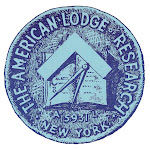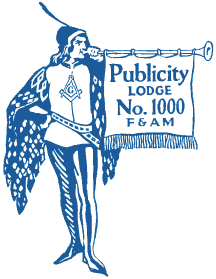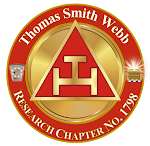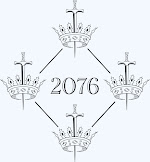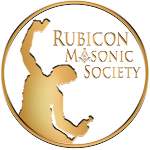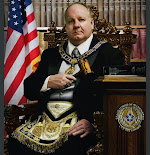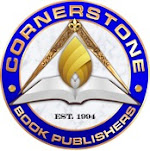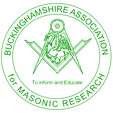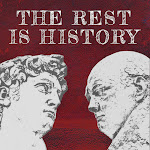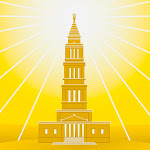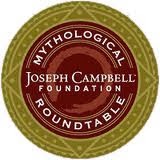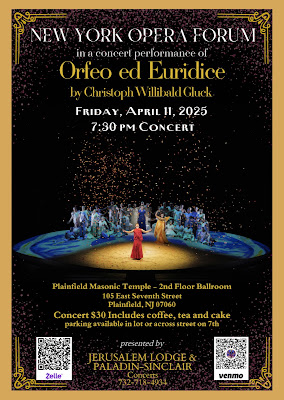Freemasons who are curious about Rosicrucianism will have an opportunity next month to learn about one path of that order when Dove Pronaos of AMORC will host a Rosicrucian Salon to discuss commonalities of the two groups. From the publicity:
Tuesday, April 29, 2025
‘Salon topic: Rosicrucianism and Freemasonry’
Freemasons who are curious about Rosicrucianism will have an opportunity next month to learn about one path of that order when Dove Pronaos of AMORC will host a Rosicrucian Salon to discuss commonalities of the two groups. From the publicity:
Dove Pronaos
Sunday, May 18 at 4:30
85 North Main Street
Sayville, New York
Join us for a fascinating public discussion exploring the shared symbolism, history, and spiritual ideals of Rosicrucianism and Freemasonry. Discover how these two mystical traditions have influenced the Western esoteric path and continue to inspire seekers today.
Open to all truth-seekers and curious minds. Come for the insight. Stay for the fellowship.
That address is the home of Connetquot Lodge 838, and it’s about fifty miles east of Masonic Hall. Bro. Jonathan Maldonado, Junior Deacon of the lodge, will lead the discussion.
I don’t endorse AMORC any longer. I wouldn’t say it’s illegitimate or anything nefarious, but I’m no longer sure what it is. To me, that order seems to have lost contact with the Rosicrucianism of C.R., and now is some kind of mix of Eastern ideas and practices. It could be right for you though, so check this out if you’re free.
Dove Pronaos will host a convocation (for members only) from 3 to 4 p.m., so don’t arrive too early.
Monday, April 28, 2025
‘The Masonic Society has gone dark’
Not a surprise, given there hasn’t been a Journal published in nearly
Sunday April 27, 2025
Greetings all members, Fellows and friends of the Masonic Society,
It is with great difficulty and sadness that we, as the members of the TMS Board of Directors, inform you that we have officially closed all operations of The Masonic Society and have ceased publication for the foreseeable future.
This decision was not an easy one. Over recent years, the leadership of TMS has been working steadfastly behind the scenes to maintain the viability of the organization while addressing a multitude of issues and concerns including having to mitigate prior management actions and breaches that inflicted irrevocable damage.
Central to these efforts has been our commitment to honoring the vision that resulted in the very creation of TMS. This dedication to Masonic Education first and foremost fueled the resolve to do our very best to meet the interests of our subscribers and members while ensuring compliance with all applicable laws, regulations and ethical standards. Throughout this experience, we operated from a perspective of simply doing the right thing and living up to our Masonic values and duties as the Board of Directors.
We are eternally grateful for all those who volunteered to serve in their various capacities during our period of restructuring. A special thank you goes to our Secretary Bro. Driver and Treasurer Bro. Doxsee who stepped in to help us pick up the pieces for what often felt like thankless work. However, the increasing costs of producing a print journal, the shift of available and sustainable resources to support the journal and an unrelenting series of administrative burdens have overcome our earnest intent and capabilities.
The Board is forever indebted and appreciative of Matt Dupee for helping to facilitate charitable donations in 2022 from the Edward and Lois Fowler Charitable Trust and in 2023 from the Robert and Margaret Cathers Charitable Trust which assisted TMS in meeting several of its critical operations and producing the last TMS journal sent to our subscribers. In full transparency, the Board made every good faith effort to prevent this outcome including the confidential exploration of a transfer of assets to another interested party to keep the Masonic Society name and journal alive however those negotiations closed unsuccessfully.
During the time of its activity, TMS benefited from the expertise of many authors, reviewers, editors, production staff, leaders, readers and others who contributed to creating and sharing content about this important Masonic area. Thank you cannot be expressed enough. Prospective authors are encouraged to seek alternative publication venues.
As we complete the remaining logistical steps for the shuttering of our doors, we encourage you to always cherish with pride the TMS patents, content, literature and ephemera that represents an important slice of Masonic history. What started as a dream, manifested into a reality and progressed through the very stages of mortality that we reflect upon within the very symbolism of our Craft.
I wasn’t privy to most of what the Board worked on the past couple of years. And I dislike the phrasing of “having to mitigate prior management actions and breaches that inflicted irrevocable damage,” as it is broad and impugns innocents. Conversely, finger-pointing would serve no purpose, but I imagine one day, after the passage of healing time, the true details will be voiced.
I thank all members who supported this great endeavor launched in 2008: everyone who wrote for The Journal; everyone who supported our annual and semi-annual meetings and Second Circles; joined in our forum; and all who took leadership roles, even if you didn’t work out, because that helped us mature too.
Participating in the Masonic Society was the defining arc of my labors in organized Freemasonry. I’ve been Worshipful Master of a Craft lodge, two research lodges, and served in the East in Royal Arch, Cryptic, AMD, and Rose Croix, but to be tapped for a leadership slot in a start-up that would fill a genuine need in Masonic education and publishing and that was so great that it positively influenced other periodicals…well, I always felt more honored than useful.
ADDENDUM: Having read Chris Hodapp’s account of these recent events on the Dummies blog, I have to offer a second opinion in epilogue. Chris writes:
Our business plan was not sophisticated, but it was sound. Very simply, members paid dues annually and members received membership benefits, including four issues of The Journal of the Masonic Society.
When I took to the presidency of the Masonic Society in February 2020, we had approximately 750 members on the books (down from our high of more than 1,300 a few years earlier). When I left the presidency in February 2022, we were back up to 1,000 (I think 997 exactly). With 1,000 dues-paying members remitting $45 each, except those overseas who paid more, we had funds! Our business model was more than adequate. We had revenue; we had expenses; it all worked out.
No, our problem was a personnel crisis. I can’t explain it without besmirching brothers I care about, but the failure of the Masonic Society was a people problem. Nothing corrupt or untoward, I promise. Maybe someday, when it no longer matters, Chris, myself, and perhaps others might be willing to talk about it publicly, but by then who would care?
CODA: Over the years, one podcaster liked to slander those of us who worked in the Masonic Society by alleging we were lining our pockets with salaries. Not true. Never true. (Meanwhile, Mr. Podcaster solicits cash donations from his audience, sells merch, and sells tickets to self-aggrandizing events.)
We reasonably proffered perfectly modest stipends to the editor in chief, design director, treasurer, and secretary in thanks for professional services rendered. Actually, Chris was our first editor, and I don’t remember him taking a nickel. Anyway, it never amounted to much money in any given year because they are Masons—and great ones at that. Had we needed to pay outsiders for these labors, we really would have suffered from a poor business plan and gone out of business much earlier.
Sorry for ranting, but the designs upon the trestleboard at the launch of TMS were clear and feasible. Much better than what the Philalethes was up to in 2008—paying an “editor” who didn’t edit, and additionally paying someone else to do the editing, for example.
Magpie Mason
April 30, 2025
Sunday, April 27, 2025
‘New York and Virginia history celebration tomorrow’
 |
| Click to enlarge. |
Masonic and political history will be celebrated tomorrow, the 267th anniversary of the birth of Brother Freemason and U.S. President James Monroe.
The occasion will be commemorated in Virginia both at his birthplace and at his burial place by the James Monroe Memorial Foundation. The annual wreath-laying at the birthplace in Colonial Beach will begin at 2 p.m., but several hours before that, the annual memorial celebration will take place at Hollywood Cemetery in Richmond—and that’s where the Masons get involved. From the publicity:
James Monroe Birthday
Memorial Wreath Laying
Monday April 28 at 11 a.m.
Hollywood Cemetery
Richmond, Virginia
Since 1858, President James Monroe has been honored on his birthday at the Monroe Monument in Hollywood Cemetery, where he was re-interred with public ceremonies. President Franklin Roosevelt issued an Executive Order providing for the Presidential Wreath to be placed at the burial place of all deceased Presidents.
Since the last century, the James Monroe Memorial Foundation has helped to host this historic event. We invite you to our public ceremonies and the luncheon reception to follow.
New York Governor Daniel Tompkins served as Monroe’s Vice President during his entire administration. Tompkins was also the first Sovereign Grand Commander of the Northern Jurisdiction, Ancient and Accepted Scottish Rite [as well as Grand Master of the Grand Lodge of New York]. In commemoration of this bond, the James Monroe Memorial Foundation has offered the Scottish Rite Guard of the Richmond Valley, Ancient and Accepted Scottish Rite, the honor of providing a Color Guard for the Memorial Wreath Laying Ceremony at Monroe’s Tomb. This event is open to the public.
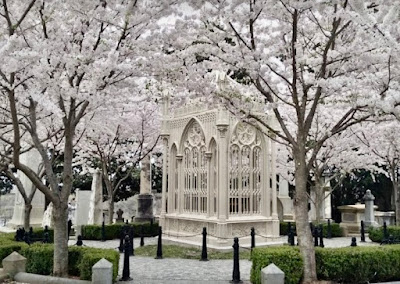 |
| James Monroe Memorial Foundation |
The Foundation says “re-interred” because Monroe died in New York City on July 4, 1831 at his daughter’s home and his remains were later removed to Richmond—another New York-Virginia connection in Monroe’s story—and buried again on July 5, 1858.
Saturday, April 26, 2025
‘Observant Masonry in New York, Part I’
Grand Lodge is readying for its Annual Communication, to open Monday, May 5 and close the next day here in Manhattan. Naturally, part of the preparation includes the publication of reports, financials, and other documents; these will be included in the Book of Proceedings later this year, but are being circulated now. The report of the Observant Masonry Committee, submitted by Chairman Bradley Hubbard, Past Master of Alcyone 695, notes major changes of purpose for the group that deserve congratulations.
First, it was explained how the three-man committee is newly restaffed. Previously, the committee was comprised of Chairman Piers Vaughan with Richard Powell and Daniel DiNatale. Today it’s Chairman Hubbard with Stephan Carter and Briggs Houston—both also of Alcyone Lodge—with the three previous committeemen now serving as advisors.
There are four lodges at labor under our Grand Lodge (of 427 lodges) that have been certified as Observant: Queensbury 121, Alcyone, Harmonie 699, and Ecclesia 1189. (It’s worth mentioning how no certified Observant lodges are found in New York City! I’m not sure what to make of that.) Chairman Hubbard writes:
“With only four out of over 400 lodges certified as Observant, it became clear that this committee in its previous format was servicing less than 1 percent of New York lodges in any practical manner. Our objective was to redefine the scope of work beyond a mere certifying body, and expand it to provide resources that would be relevant to 100 percent of the lodges in the jurisdiction. The true purpose of the Observant Masonry movement and this committee is to ensure the survival and prosperity of the Craft by disseminating resources which can be implemented by any lodge to revitalize and revolutionize its Masonic practice. Whether that lodge seeks the path of Masonic Observance or picks and chooses which aspects work for their lodge culture is their choice, but in either circumstance the committee is there to assist.”
It’s time to reminisce a little. There is no connection between the Grand Lodge of New York and the Masonic Restoration Foundation. I hereby promise and swear I don’t know the reason for that, but I once was told that about a decade ago, the Grand Lodge made it known it wouldn’t want its lodges aligned with the MRF. New York lodges then listed on the MRF’s website soon were delisted.
This reminds me of that essential cabal meeting* at Gadsby’s in February 2008 when the discussion of what then was called Traditional Observance Masonry included the caution “You can’t serve two masters,” meaning a lodge looking to include T.O. ideas into its practices had better understand that fealty to its grand lodge should dwarf any appreciation of the MRF.
Back to the present. W. Bro. Hubbard goes on to say the GLNY’s Observant certification guidelines were redefined “to create a flexible, but comprehensive standalone document that described not only the objectives of the initiative, but provided a practical template for lodges to implement.”
If I understand correctly, this is in the form of a book, Guidelines for Practice and Certification, a copy of which I now am seeking to obtain. Got it. Click here. Hubbard continues:
“Another aspect of the new Guidelines was to revise the mission statement of the GLNY Observant Masonry initiative to reflect the mandate of expanded relevance mentioned previously in this report. Part of that included redefining the controversial OM designation–the only of its kind in existence–from a perceived title of exclusivity to one of service. Lodges choosing to pursue and bear the OM designation henceforth must commit to bettering the Craft at large by serving as an exemplar and ambassador of the program, offering themselves as a practical regional resource to other lodges that wish to implement Observant practices.”
For more on this forward thinking project, visit the Observant Masonry page on Grand Lodge’s website here.
Bravo to the committee! Huzzah!
Really strange there aren’t OM certified lodges in the city.
*There is no cabal.
Friday, April 25, 2025
‘Dublin blues … times two’
Two headaches stemming from media shoots inside the headquarters of the Grand Lodge of Ireland in one week? The first, I don’t believe, is a problem, but this second one currently making headlines surely has to result in someone in the business office losing his job.
Last Friday, the political commentator Tucker Carlson (“Tucker Qatarlson” to some of us) published his nearly hour-long interview with famed mixed martial arts fighter Conor McGregor. Found liable for sexual assault in civil court there last year, McGregor announced his bid for Ireland’s presidency last month. This interview was shot inside Freemasons’ Hall. In the background a pipe organ, decorated with the Square and Compasses, is seen.
 |
Irish Times Tucker Carlson and Conor McGregorinside the Grand Lodge Room. |
Contrary to many squeals on the web, this in no way equals any Irish Masonic endorsement of either McGregor or Carlson. It is common for Masonic premises to be leased to production companies for filming. You might be surprised at how many Masonic buildings, whether opulent or humble, are the locations in film and television projects. It’s a fairly easy way for the proprietors of the buildings to generate revenue to keep the lights on.
But you have to know what you’re doing.
Grand Lodge says it wasn’t apprised of McGregor’s involvement until an hour before the cameras were turned on. They ought to have canceled the contract before that. A lease agreement of the premises should include the exact purposes for the use of the property. When it finally became known that McGregor was to be involved, the building trustees or business manager or whoever is in charge should have evicted the production. Now they’re in the lose-lose situation where they have bad press and internal disharmony over having Carlson, McGregor, and politics inside the building, and the couple thousand euros income to be given to charity.
The second, and far more offensive, shoot is simply incomprehensible.
Something named Eskimo Supreme, the rap persona of one Alexander Sheehan, of Dublin, filmed a music video in Freemasons’ Hall. Yesterday’s Belfast Telegraph reported:
Featuring Irish rapper Eskimo Supreme (Alex Sheeran) with his new single “Spit in it!”, the video opens inside the Freemasons’ Hall in Molesworth Street.
Actors dressed as dissident republicans in balaclavas and combat gear are imprisoned behind wire in the stunning Victorian room.
They yell: “Let us out you British b ****** s. Let us out you British c***. We are political prisoners and we demand political status.”
A woman playing the Queen sits on a throne at the top of the room. The prisoners are then released one by one to spit on her. After spitting, they are shot dead by her bearskin soldier guards.
An explainer below the video states that the British Government has “unlocked a freak scientific discovery whereby the saliva of Irish dissident republicans morphs a Royal family member into a dragon when their saliva encounters (royalty) enough times.”
It adds: “Theorists believe that the British Government wanted to create this royal dragon to use as a weapon of war.”
At the end of the video, the Queen is transformed into a dragon and is seen flying over London.
Eskimo Supreme is signed to Greenback Records, which was co-founded by Conor McGregor.
While I’ve never subscribed to the ugly stereotypes painted on the Irish, I don’t think instantly of prim propriety either. What comes to mind immediately are Wilde, Joyce, The Ginger Man, Black 47, and the I.R.A. As a Freemason, I would hope the business side of Freemasons’ Hall could operate with more care, and with management of the leasees.
It’s a real shame. The brethren there are less than two months from celebrating the tricentenary of their Grand Lodge. I wish the pall over the fraternity from these mistakes will dissipate well before then.
My thanks to MW Cameron Bailey on Emeth for the alert to the rap flap.
Wednesday, April 23, 2025
‘MRF registration is open!’
Registration for the Masonic Restoration Foundation’s Fourteenth Annual Symposium opened this afternoon. The brethren will gather in Hamilton, Ontario the weekend of August 15. Click here. From the publicity:
The Masonic Restoration Foundation Symposium is the largest gathering of Masons in North America who are expressly committed to observing the highest standards of excellence in the Craft. This year, for only the second time, we are returning to Canada, to one of its most majestic Masonic locations: the Hamilton Scottish Rite Temple in Ontario.
The Symposium will take place from August 15-17 and will be hosted by Templum Lucis Lodge 747.
As usual, the event will begin with a Harmony [Festive Board] on Friday evening, conducted by the MRF Board, and featuring comments from our Keynote Speaker, WB Ric Berman, Past Master of Quatuor Coronati Lodge 2076 in London, England.
Along with our usual line-up of interesting speakers, brothers will have the opportunity to witness a Fellow Craft Degree conferred by Heredom Lodge 749 on Saturday afternoon.
Registration for the Symposium costs $125 USD/$175 CAD, or $75 USD/$100 CAD for the Saturday session only.
We are hoping this Symposium will be an opportunity for an exchange of different perspectives and methods of Masonic practice in North America, and one that will especially bring in brothers from across Canada. All the information you need to participate is found here. We look forward to seeing you at the Symposium!
Featured Speakers
& Panelists
Ric Berman, Past Master, Quatuor Coronati Lodge 2076, England; Past Grand Sword Bearer, UGLE.
Ed Burridge, Past Master, Templum Phoenix Lodge 57, Fredericton, NB; Past Deputy Grand Master, Grand Lodge of New Brunswick.
David Cameron, Past Grand Master, Grand Lodge of Canada [Ontario]; Secretary, Templum Lucis Lodge 747, Stratford, ON;
Secretary, MRF.
Donald Carducci, Master, Victory Through Harmony Lodge 94, Montreal, QC.
Jean-Frédéric Dicaire, Past Master, Victory Through Harmony 94, Montreal, QC.
Philip Durell, Past Grand Master, Grand Lodge of British Columbia and the Yukon; Board Member, MRF.
Dan Graham, Master, Templum Lucis 747, Stratford, ON;
Past Grand Director of Ceremonies, Grand Lodge of Canada [Ontario].
Andrew Hammer, Past Master, Alba Lodge 222, Washington, DC; PJGD (Hon.) & Deputy Grand Lecturer, Grand Lodge of the District of Columbia; President, MRF.
Chad Lacek, Secretary, Illumination Lodge 5, Chicago, IL; Grand Lodge Education Committee, Grand Lodge of Illinois.
Keynote Address
Origins, Allegory,
and the Enlightenment:
From the Horn Tavern
to Solomon’s Temple
Ric Berman
Ric Berman is a renowned Masonic historian and author of numerous books on the history and development of Freemasonry, and is a past Prestonian Lecturer. His Keynote Address on Friday evening will speak to the idea of the origin of Speculative Masonry, and why the trigradal system is the essence of the art.
Opening Address
Why Do We Bother?
Andrew Hammer
Andrew Hammer serves as Deputy Grand Lecturer of the Grand Lodge of the District of Columbia, and is the Chair of its Committee on Work and Lectures. He is author of Observing the Craft, a Fellow of the Philalethes Society and the Masonic Society.
Brother Hammer speaks to lodges throughout the world on observant Masonry, as well as philosophical aspects of the Craft. As President of the Masonic Restoration Foundation, he will give the opening address on Saturday morning.
Closing Address
Kipling, Burns, and Observant Masonry
David Cameron
A long time advocate of observant Masonry, Brother Cameron was instrumental in supporting the effort of brethren to build observant lodges in Ontario whilst Grand Master. His closing address will deal not only with the thread that ties our weekend together, but also ties our work today with those who came before us.
Monday, April 21, 2025
‘Welsh Masons launch High 12 Gin’
 |
| PGL of Monmouthshire |
“The gin-and-tonic has saved more Englishmen’s lives, and minds, than all the doctors in the Empire.”
Winston Churchill
Just in time for the return of warm weather here in the Northern Hemisphere, a new gin for Freemasons is coming to market.
“Market” is a relative term, because if you want to mix cocktails with this botanical spirit, its distribution is limited to Monmouthshire, Wales—and you’ll place your order through the Provincial Grand Lodge there. I’m game, but I know they won’t ship to the States.
In fact, my inquiries for any information to both the distillery and the brethren in Newport go unrequited. Sometimes that’s just the way it goes, but the PGL employed its social media accounts for the annunciation.
If you’re able to acquire this product (£30/bottle), feel free to click here for recipes of Masonic-friendly gin cocktails. Make your dad a drink, and maybe he’ll smell of elderberries. Vivat!
Friday, April 18, 2025
‘Manitoba anniversary in May’
If you know me in real life, you probably noticed my intense passion for Freemasonry in Canada. The Craft’s arrival there in the 1730s, its spread westward across the nation through the ensuing century and a half, and many Masons’ prominence in civil society parallel the dynamics seen in this country, and when the Great White North becomes No. 51 of these United States, Masonic brethren will become even closer knit kin.
In the meantime, the Grand Lodge of Manitoba will reach its sesquicentenary next month and will celebrate with a big bash in Winnipeg next Friday (buy your tickets and sponsorships here).
It was on May 12, 1875 in that capital city when three lodges—Prince Rupert 240, Lisgar 244, and Ancient Landmark 288—met in convention to form the Most Worshipful Grand Lodge of Manitoba, Ancient Free and Accepted Masons. They would be renumbered 1, 2, and 3, respectively. This colossal event occurred precisely five years to the day after the Province of Manitoba itself was established and welcomed into the Canadian nation.
Here’s how the legal paperwork looks, per the Grand Lodge of Nova Scotia’s proceedings (I must have loaned out my Manitobas from that decade):
The following Preamble and Resolutions were submitted, to wit:
That whereas pursuant to the provisions of the British North America Act, Manitoba has been formed a separate and distinct Province, and as such is legally recognized as one of the confederated Provinces of the Dominion of Canada.
And whereas, there is no Grand Lodge of AF&AM existing in, or claiming jurisdiction over said Province.
And whereas, there are three constitutionally chartered Lodges in active existence therein.
And whereas, said Lodges are here duly and constitutionally represented as Lodges.
And whereas, this Convention is of opinion that the harmony, peace and highest interests of Masonry in the Province of Manitoba, require that a Grand Lodge be formed in and for said Province, and on the following conditions:
That the Constitution of the Grand Lodge of Ancient Free and Accepted Masons of Canada be adopted, Mutatis Mutandis with the following amendment:
That all bearing upon the office of District Deputy Grand Master be struck out.
And that this Convention in the exercise of its inherent rights and constitutional usage and acting under and by the instructions of their respective Lodges.
RESOLUTIONS.
1st. Resolved, That a Grand Lodge be and is hereby declared duly established on the Constitution just named.
2nd. Resolved, That the title of the Grand Lodge shall be, THE MOST WORSHIPFUL THE GRAND LODGE OF MANITOBA, ANCIENT FREE AND ACCEPTED MASONS.
3rd. Resolved, That the said Grand Lodge shall have, hold and exercise forever full and sovereign jurisdiction in and over said Province.
It was moved by R.W. Bro. W.C. Clarke, and seconded by R.W. Bro. Wm. N. Kennedy, that the Report of the Committee on Resolutions just read, be received and adopted by this Convention. Carried unanimously.
It was moved by R.W. Bro. W.C. Clarke, seconded by R.W. Bro. W.N. Kennedy,
That we, the Representatives of the three Warranted Lodges, being all the Lodges in this Province in Convention assembled, Resolve, that The Most Worshipful the Grand Lodge of Manitoba, AF&AM, be and is hereby formed upon the Ancient Charges and Constitution of Masonry. Carried unanimously.
The Grand Officers were subsequently elected and installed in due and ancient form.
And then there’s the Legislative Building!
Alas, it would be only two years into the Grand Lodge’s existence when an unmasonic and uncanadian disturbance would rock the fraternity. In 1877, a rift emerged between then Grand Master George Newcomb and Junior Grand Warden E. George Conklin. The former issued an edict concerning how lodges appointed investigating committees for petitioners; the latter, in his dual capacity as Master of the aforementioned Prince Rupert Lodge 1, refused to obey the order and soon found himself suspended. (I am unable to find this document thus far, so I cannot quote it to you.) In June of the following year, the Grand Lodge convened its third Grand Communication. There was talk of lifting the suspension if an apology was offered, but instead Conklin and several supporters disrupted the elections of officers and exited the meeting. Six months later, the rebels, including Past Grand Masters, organized a breakaway grand lodge, held two meetings of the same, and eventually found themselves expelled from Freemasonry. I mention this here because we New York Masons have schisms in our colorful history. It all sounds just bizarre in 2025.
The Magpie Mason wishes a happy anniversary to the brethren in the Keystone Province. I hope to visit one day.
Wednesday, April 16, 2025
‘New York to launch Académie Esoterica’
The Grand Lodge of New York will launch its Académie Esoterica in August to inculcate the meaning of Masonry in a long term series of classes and discussions, Grand Master Steven Adam Rubin announced this afternoon. Excerpted from his letter to the Craft:
I am pleased to introduce Académie Esoterica.
Freemasonry is an initiatic tradition that speaks in symbols, invites personal reflection, and guides us toward universal truths. It is this deeper journey, this inner path of growth and Light, that we now invite you to explore.
The Esoteric Classes of the Grand Lodge of New York are designed to enrich the mind and elevate the spirit. This multi-year program begins with two years of foundational study, followed by deeper explorations into the mysteries of our three degrees. Classes will be offered as monthly one-hour intensives, each paired with Esoteric Salons to engage in meaningful dialogue, debate and shared discovery.
The first-year course outline is above.
Registration details and the full schedule will follow shortly. Our first session, “The Goals of Esoteric Masonry,” launches at Grand Master’s Day at Camp Turk on Sunday, August 17 at noon. All Brothers are welcome.
Should you have any questions, please send an email here.
Grand Master’s Day at Camp Turk:
For all Brothers and families traveling from the Metro Area, round-trip bus transportation from Masonic Hall will be available for a small fee of $25. The bus is available to all, and not just those wishing to participate in the Esoteric Program. Bus payment details will be available after the Grand Lodge Session.
Should other Regions of the State wish to explore the possibility of a Grand Lodge/Trustee sponsored bus, please email RW Bro. Lorenzo Cesare here.
Come grow with us and seek Light with us, because within every Brother lies a greater self waiting to awaken.
Tuesday, April 15, 2025
‘Observations on the History of Masonic Research’
 |
| Nineteenth century Vermont apron as described in the current issue of Philalethes. See below. |
Masonic research can, and indeed should, include room for debate. It is only thus that brethren can get to the nub of a matter, sort the corn from the husk, and arrive at the best obtainable version of the truth. This would be done in a dignified and Masonic manner, and no brother should be verbally abused or ridiculed over his efforts in this regard.
I guess it had to be done, and evidently Bro. Kenneth Jack is just the guy to do it. The “it” is a primer on Masonic research, part one of which appears in the current issue (Vol. 77, No. 3) of Philalethes, the quarterly journal of the Philalethes Society. Part of his “Observations on the History of Masonic Research” informs us of such a debate, in print for all to see, as the grand lodge era approached its sesquicentennial. More on that later.
This lengthy essay is a tantalizing Part One that starts us on the formation of Quatuor Coronati Lodge 2076 in London which, as we know, is the first Masonic lodge chartered to be the “authentic school” for Masonic research, “taking a scientific, empirical approach to the study of Freemasonry.” He takes us into research societies, namely Philalethes, which was founded in 1928 and “devoted to fearless Masonic research.” Then comes an accounting of a number of periodicals in Great Britain from previous centuries. From England:
• The Freemasons Magazine
• The Freemasons’ Quarterly Review
• The Masonic Mirror
• The Freemason
• The Masonic Examiner
• The Freemason’s Chronicle
• The Masonic Illustrated
• Freemasons Magazine and Masonic Mirror
From Scotland:
• The Masonic Mirror
• The Scots Masonic Magazine
• The Scottish Freemasons’ Magazine
• The Masonic News
• The Scottish Freemasons’ Magazine
• The Scottish Freemason
• The Aberdeenshire Masonic Reporter
• The Masonic Gazette
• The Scottish Masonic Record
• The Scottish Freemason
• The Masonic Magazine of Glasgow
• The Dundee Masonic Magazine
• The Scottish Freemason
• The Aberdeen Masonic Reporter
There is much color in Bro. Jack’s telling. On the debate over the empirical research versus the intuitive, speculative side, he quotes the estimable Douglas Knoop:
Actually, the imaginative school did not consist of writers utterly careless as to their facts, nor ought the verification of facts, which is characteristic of the authentic school, to be considered sufficient in itself and as excluding all need of imagination. Imagination as a substitute for facts is useless: as a guide to facts it may be invaluable.
Jack also brings to light an argument on whether Freemasonry is Christian and ought to be reserved to Christians only—something I have heard myself over the years. A lengthy duel commenced in the July 28, 1866, issue of Freemasons Magazine and Masonic Mirror makes the modern Freemason marvel at how eminent Freemasons of the past voiced their disagreements. A terrific read, and I’m looking forward to Part II.
There is more in this issue of course. Bro. Chris Murphy of Fibonacci 112 in Vermont shows us beautiful regalia from that state from the early nineteenth century to tell us the story of the Eddy-Robinson aprons. He writes:
During the autumn of 2022, at Manchester, Vermont, in the deepest corner of a long-neglected basement closet, tucked in the back of a large safe and wrapped in a paper sack, a Masonic treasure was found: seven fragile aprons, appearing to date to the early 1800s. Five were differently ornamented Craft aprons, each printed from the same engraved plate; four on silk and the fifth on lambskin. The remaining two were matching examples of a Royal Arch design, printed on silk. Each bore the engraver’s mark “O Eddy, sc,” and under the flap of each were the words, “Published by Lewis Roberson.” The Craft aprons included the location “Weathersfield, Vermont,” and the HRA aprons noted their provenance as neighboring “Reading, Vermont.”
What follows is an engrossing history of Freemasonry in the Green Mountain State that quickly homes in on the lives of two brethren at Eastern Star Lodge 43. Thanks to his sleuthing, Murphy attributes the manufacture of these aprons to two Eastern Star brothers: Oliver Eddy and Lewis Roberson/Robinson, who were active during the early nineteenth century.
The lodge itself disappears in 1834 during the anti-Masonic hysteria (remember, Vermont was a nerve center in the panic, having a governor in 1831-35 elected on the Anti-Masonic Party ticket).
These aprons display symbols that any of us would expect from this period before grand lodges standardized their rituals, but Murphy’s all-seeing eye discerns a quirk: a key suspended from a heart.
I recommend this paper to you for an interpretation of this unique image, and encourage you to read this issue of the journal, and urge you to pursue membership in the Society as well. Click here.
Sunday, April 13, 2025
‘Hammurabi on Long Island’
 |
Encyclopedia Britannica Stone carving showing Hammurabi standing before a god. |
The Chancellor Robert R. Livingston Masonic Library and Museum of the Grand Lodge of New York has hosted a steady schedule of lectures on diverse Masonic subjects for years in Masonic Hall, and now it expands its reach, presenting more talks around our state—and always free of charge and open to the public.
On Friday, this Satellite Live Lecture Series will launch at Smithtown Lodge 1127 on Long Island. Bro. Frank Ida, a Past Master of the lodge, will discuss “Masonic Beginnings in the Code of Hammurabi.”
The publicity says: “The Code of Hammurabi, a collection of laws and decrees created by Babylonian King Hammurabi around 1754 BC, is one of the oldest and most complete legal texts from the ancient world. While not directly related to the origins of Freemasonry, the code’s emphasis on justice, order, and social responsibility resonates with the principles of the fraternal organization.”
Doors will open at 7 p.m. at 34 River Road.
(I think they should move this a few miles south to Babylon Lodge, but no one consults me.)
On Saturday, May 3 in Troy, a trio of speakers will go “Behind the Square and Compass: A Journey into Freemasonry.”
RW Michael LaRocco, Executive Director of the Livingston Library, will emcee the event. Your speakers will be:
■ Bro. Keith Dobbs on “Curiosity & Personal Journey”
■ VW Jason Chaplin on “From Operative Masonry to Speculative”
■ Bro. Jerad Gribben on “Symbolism and Rituals in Freemasonry”
This will be in the Troy Masonic Community Center (39 Brunswick Road) at two in the afternoon.
Again, admission is free, but it’s wise to book your seats. Click here and maybe I’ll see you there.
Saturday, April 12, 2025
‘Washington museum catalog now online’
 |
| GL of Washington |
The Masonic Library & Museum of the Grand Lodge of Washington announced yesterday how its museum collection catalog is viewable online now. From the publicity:
Our Museum Collection
is Viewable Online
Curious what artifacts we preserve at the Washington Masonic Library & Museum? Our catalog is now viewable online! Check it out via the Washington Masonic Services website here.
Just some of the items viewable online include a Grand Lodge of Washington Territory Banner (c. 1858), panoramas of Washington Grand Lodge meetings held in the 1920s, historic lesser lights from Steilacoom Lodge 2, a Masonic Grandfather clock (c. 1910s), and so much more. Every month more museum artifacts are added to this digital collection. Remember to check back periodically to see what is new.
Washington State’s history is deeply connected with Freemasonry, a fact explored in depth at the Masonic Library & Museum. This institution sheds light on how Masons, including the state’s first governor and numerous influential figures, like legislators and judges, have shaped its governance and community. Even today, Masonic members play a significant role in various local and state sectors.
The museum showcases the enduring impact of Masonic values from the state’s early days to the present. Our professional curator works in partnership with the volunteers who are the Masonic Library & Museum’s foundation and have cared for it since its inception. Together, this team tends to approximately 50,000 Masonic books, photos, and documents, plus 6,000 artifacts that comprise our collections.
The Masonic Library & Museum is a service available to the individuals, lodges, and the community at large. Those seeking to expand their knowledge of Freemasonry will find this to be an invaluable resource, with many items available online. The professional expertise of the WAMS curator is an opportunity for lodges to learn best practices to safeguard the important Masonic artifacts that they hold.
Friday, April 11, 2025
‘Music is a language of delightful sensations’
Two live music concerts to tell you about. Sorry this first one comes so late, but I learned of it only today. Wish I could go. All the info you need is in the above advertisement.
However, a few weeks off, the Grand Lodge of Massachusetts will host “A Concert for Brotherhood, Family, and Future” at the Boston Masonic Building. From the publicity:
 |
| Boston Latin American Quartet. |
Brother, you are invited to the Grand Lodge Gala 2025, presented by the Grand Master of Masons in Massachusetts in support of Massachusetts Rainbow Girls and DeMolay.
 |
| Eliot Fisk and Zaira Meneses. |
Join us for an afternoon of world-class music featuring celebrated artists Zaira Meneses, classical guitarist; Eliot Fisk, virtuoso guitarist; and Boston Latin American Quartet, celebrating rich musical traditions.
Sunday, May 4
186 Tremont Street, Boston
Doors open at 1 p.m. followed by hors d’oeuvres reception. Tickets are on sale now here. Business Attire.
The headline of this edition of The Magpie Mason is borrowed from the lecture of the Fellow Craft Degree, as rendered in New York.
Friday, April 4, 2025
‘What’s the deal with Masonic Hall on Seinfeld?’
 |
Castle Rock Entertainment Masonic Hall makes a cameo in an episode of Seinfeld from 1992–not that there’s anything wrong with that. |
This is old news but, since I recently snapped the image above, and today is the Mets’ home opener, here we are. I finally made the effort to capture the fleeting shot of Sixth Avenue in a manic scene in one of the defining episodes of one of the most hilarious television programs of the 1990s.
Titled “The Boyfriend,” this was the first two-part episode of Seinfeld, broadcast originally on February 12 and 19, 1992, the era of the show when its writing, acting, direction, and photography reached their apex, making the comedy the unique epochal document its admirers, like myself, remember today.
(Another episode, titled “The Outing,” broadcast February 11, 1993, upheld “the NYU paper” for ridicule. I had been News Editor of The Washington Square News until recently, making that Seinfeld story especially funny and memorable. I watched it that night with fellow WSN alums, giggling like idiots—not that there’s anything wrong with that.)
“The Boyfriend” is one of those stories that keeps the stars simmering one degree below insanity. Jerry befriends Mets great Keith Hernandez. Through Jerry, Hernandez meets and begins dating Elaine. George, unemployed again, tries to snaffle undeserved unemployment insurance benefits from his case worker. Kramer, with Newman, allege Hernandez had spit on them after a Mets loss to the Phillies five years previously.
Jerry stresses over how to interact with his new and famous friend, worried about his choice of shirt. Elaine dates the Mets legend, meeting at the old Fitzpatrick’s on the UES while he regales her with Game 6 excitement. Kramer and Newman unpack their spitting accusation, which leads to a devilish satire of Oliver Stone’s JFK, released two months earlier, was still in theaters, featured Wayne Knight, and would be nominated for eight Oscars the following Wednesday. Now that is one magic scene!
And then there’s George.
He attempts to con the state unemployment benefits system by claiming he recently had interviewed for a position at latex manufacturer Vandelay Industries, giving Jerry’s address and phone number for its contact info. After leaving his case worker, George maniacally races uptown to Jerry’s apartment to enlist his complicity in the fraud. In a cab heading up Sixth Avenue, he harries his driver with maddening backseat driving. The cabbie (Richard Assad), exasperated, pulls over and throws his fare out of the car.
This happens at the corner of Twenty-Third and Sixth, where stands Masonic Hall, plainly visible in the b-roll shot, as you see above.
In the end, George’s plot explodes in calculated madness, leaving him sprawled on Jerry’s floor, pants around his ankles, prompting Jerry to deliver a line said to have been improvised: “And you want to be my latex salesman?!”
The neighborhood looks different today. That Icon Parking lot on the right is long gone—yada, yada, yada—the 22-story luxury apartment building, annoyingly named The Caroline, was completed on the site in 2002.
Of the multitude of reasons why Masonic Hall is a legend amid the cityscape, I’d say its cameo in this Seinfeld episode ranks among the top 200.
Labels:
Masonic Hall,
New York University,
NY Mets,
Seinfeld
Subscribe to:
Comments (Atom)





